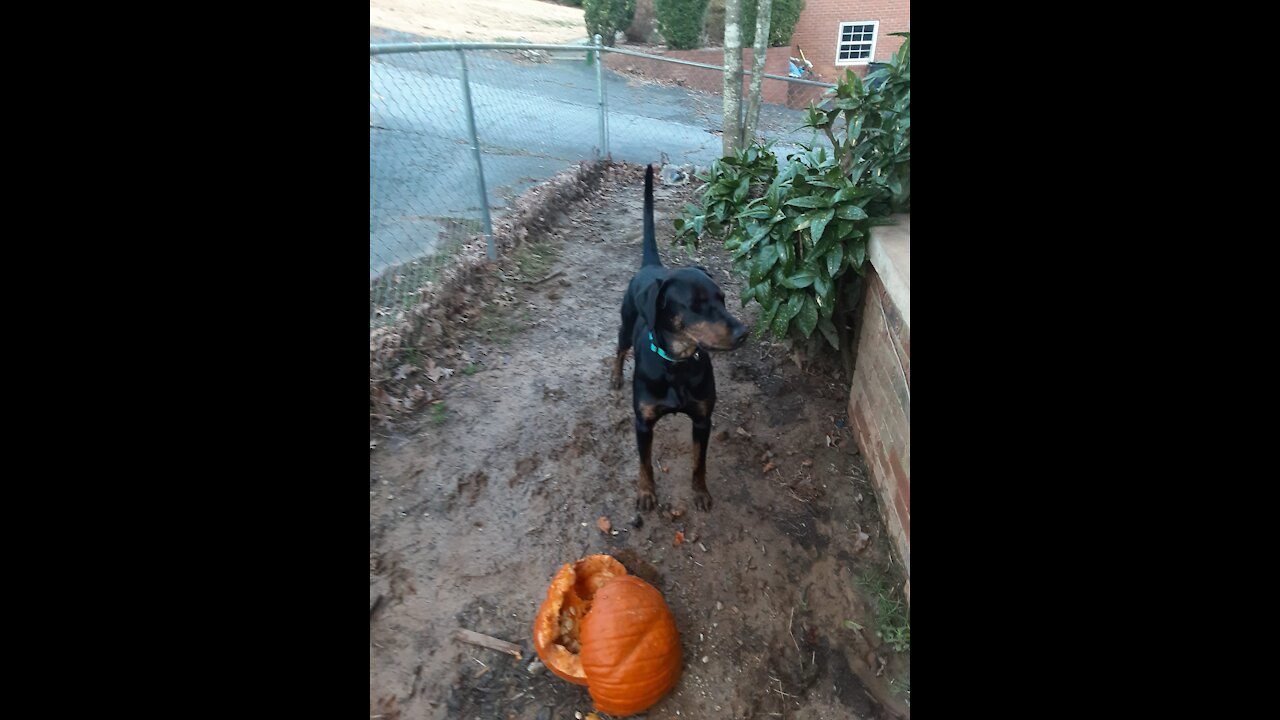Premium Only Content

Doberman refuses to leave so new grass can be planted - Minor Doberman Aggression
Develop your Dog's "Hidden Intelligence" To eliminate bad behavior and Create the obedient, well-behaved pet of your dreams…
Click here: ►► https://bit.ly/3zvS9kh
Sunshine loves her mud patch she created by destroying the grass that we are trying to replace. She stands her ground, tail raised, and growls at me displaying some aggressive behavior.
Sometimes you witness aggressive behavior in Dogs.
There are many causes of aggressive behavior in dogs. It might be due to a dominance related issue between you and the dog, or it might be a trigger that was never properly dealt with from puppyhood - such as an attack by a different dog. Whatever is causing your dog's aggression, however, you need to address it as soon as possible. The results of prolonged aggression can be not only scary, but dangerous if not quickly taken to task.
Dog aggression can start as young as 6 weeks of age, a crucial age when a puppy should be socialized with other dogs and given the necessary training that keeps them from biting other people. This period of socialization lasts until the dog turns 14 weeks of age and can extend even further beyond that.
This means several things. First, never take a puppy away from its litter before 8 weeks of age. Never use harsh discipline with the puppy between 8 and 10 weeks and make sure the dog is very gently treated in that time. Hitting, yelling or other harsh punishments at a young age can breed aggressive behavior in dogs over time.
A dog needs to have been properly socialized with people and other dogs by the time he reached 14 weeks to avoid any future aggression issues.
Actual aggression can be triggered by any number of factors. Heredity and genetics are certainly factors - some breeds can be more aggressive than others - but it is by no means a hard fast rule. Additionally, dogs that have not been neutered or spayed are more prone to aggressive tendencies.
By far, however, the most important factor in creating aggressive behavior in dogs is their environment. A dog that has poor living conditions, harsh masters, no socialization, or that has been frightened or attacked by another dog is far more likely to be aggressive as it ages.
Aggression can grow from the need to establish a pack pecking order. Biting, posturing, and other aggressive tendencies are often the result of a dog testing for dominance. Notice that I didn't cower when she growled at me. Instead, I showed dominance as the Alpha leader in my calm approach. You'll need to establish dominance at a young age and maintain that position throughout the dog's adolescence to ensure it doesn't get a chance to take control of the household.
In order to stop and control aggressive behavior in dogs resolute action is needed. If your dog exhibits aggressive behavior after 14 months of age, when it has reached sexual maturity, especially after it has been altered, you should address the problem immediately. First, make sure you have established yourself as the pack leader. Don't reward your dog for aggressive behavior, even if it is scared (especially in this case).
Train your dog to respond to your commands, control feeding and walking times, and make sure the dog has a strong leader in the house. If you defer to the dog or allow it to take liberties in your home, it will exhibit stronger aggression toward others.
If your dog is defensive-aggressive, they may strike out at a person in fear. These dogs may not have been properly socialized. Keep them away from small children (which they may see as direct threats) and attend a training session or behaviorist who can slowly acclimate the dog to a social atmosphere.
Aggressive behavior in dogs is a huge problem that many owners have, but it can be controlled, even as your dog gets older. If your aggression ever advances to violence, consider hiring a professional to intervene before someone gets hurt and your dog is held responsible.
-
 0:41
0:41
ViralHog
3 years ago $0.02 earnedRottweiler Refuses to Leave Front Seat
3312 -
 0:13
0:13
ViralHog
3 years ago $0.02 earnedDuckling Refuses to Leave Bathtub
139 -
 0:29
0:29
ViralHog
3 years ago $0.04 earnedWater Loving Dog Refuses to Leave
3.84K -
 0:32
0:32
cmb485
3 years ago $0.01 earnedKitten Refuses to leave Grocery Bag
96 -
 2:19
2:19
The Post Millennial Live
3 years agoLarge group of unvaccinated people refuses to leave NYC Cheesecake Factory
133K69 -
 1:48:19
1:48:19
The Quartering
8 hours agoElon Calls White People Dumb, Vivek Calls American's Lazy & Why Modern Christmas Movies Suck!
127K99 -
 2:08:42
2:08:42
The Dilley Show
9 hours ago $33.55 earnedH1B Visa Debate, Culture and More! w/Author Brenden Dilley 12/26/2024
108K24 -
 4:55:59
4:55:59
LumpyPotatoX2
11 hours agoThirsty Thursday on BOX Day - #RumbleGaming
107K5 -
 1:04:52
1:04:52
Geeks + Gamers
10 hours agoDisney RATIO'D on Christmas Day | Mufasa Embarrassed By Sonic 3
79.6K9 -
 8:27:46
8:27:46
Sm0k3m
14 hours agoPlaying games on Rumble
50.7K2